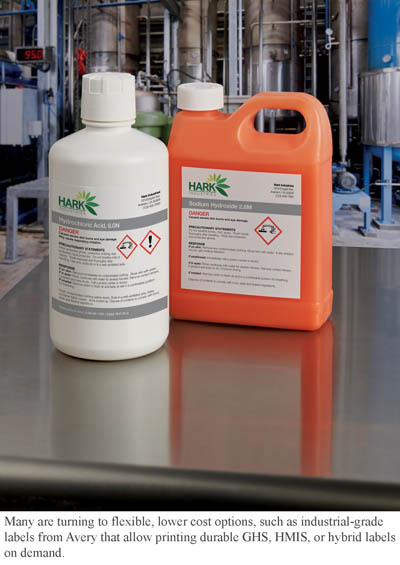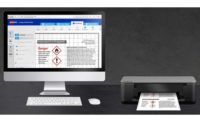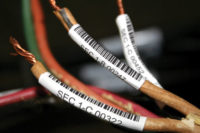 With the deadlines for “Globally Harmonized System” (GHS) label compliance now past for chemical manufacturers, distributors, and end users, OSHA has some stiff fines planned for those not yet with the program.
With the deadlines for “Globally Harmonized System” (GHS) label compliance now past for chemical manufacturers, distributors, and end users, OSHA has some stiff fines planned for those not yet with the program.
“For any stragglers who are not GHS label compliant, OSHA fines and penalties are expected to go up 80% this summer,” says Mark Howell,” owner of Howell Safety and Training Solutions, a Jonesboro, AR-based safety and risk management consulting company. “By August 1, the maximum fine is expected to rise from $7,000 per violation to $12,600 per violation, and for more serious issues from $70,000 to $127,000 per violation.”
End users, who may not yet be fully GHS label compliant after the most recent June 1, 2016 deadline, or who may want to streamline their compliance process, will find that easy GHS labeling options can cut the complexity as well as make production safer. For end users, GHS compliance is required for chemical formulations purchased in bulk containers for cost savings, such as barrels of industrial cleaner that are transferred to smaller “down-packed” containers, such as spray bottles, for portable use.
Containers requiring GHS-compliant labeling can vary in size from 55-gallon drums down to little test vials. In an industrial setting, chemical formulations that could require GHS labeling range from industrial primers, coatings, and sealants to lubricants, greases, cutting oils, and rust removers to acid, alkaline, and solvent based cleaners to degreasers, surfactants, disinfectants, and sanitizers.
End users that are still challenged by GHS label compliance would do well to emulate a metal manufacturer that recently became compliant while improving safety on its production line.
Compliant in a Couple Hours
When a large metal supply service center in Ohio sought GHS label compliance for “down-packed” secondary container labeling, it proactively sought a solution.
According to David Heberling, a Quality Metallurgist and Safety Manager at the metal service center, down-packing was necessary from 55-gal drums to smaller containers with spray nozzles. The applications involve spraying oils, solvents, and lubricants onto product surfaces and into production line equipment that produces flat-rolled steel, in coils and cut lengths.
“Label durability is important to us, so we turned to Avery’s UltraDuty GHS Chemical Labels,” says Heberling.
While Avery has been a leading label brand in the office market for decades, unlike typical labels, these GHS labels are industrial-grade labels designed to be chemical resistant, tear resistant, abrasion resistant, and constructed with a marine-grade adhesive that is waterproof and passes a 90-day seawater submersion adhesion test.
Just as important to Heberling, if not more so, was the ease of use of the label-printing software, available from the company’s website at no cost. The company’s Design & Print GHS Wizard allows employees to create and print their own GHS and HMIS labels from pre-designed templates. They can create on demand labels step-by-step at their desk, as well as create GHS and HMIS hybrid labels capable of satisfying both systems. Most employees find such a process intuitive, since it resembles creating an office document from pre-designed templates.
The software includes the pictograms and GHS compliant statements needed for GHS labeling; allows customizable text; insertion of company logo or other images; generation of 18 types of barcodes; and a sequential numbering feature to add lot numbers or other variable data.
“What I really needed was the chemical name, hazards, pictograms, and precautions for internal company use,” says Heberling. “I like that when I entered the CAS number for the main chemical ingredient from the Safety Data Sheet, the software filled these in and allowed me to modify them to suit our situation as appropriate. Most of the work was done for me.”
No download is required since the software operates from Avery’s website, and GHS, HMIS, and NFPA labels can be securely saved online or to a computer. The software is also capable of printing other safety labels such as OSHA, ANSI, and DOT labels.
“The ability to convey needed GHS label info clearly, as well as combine it with other systems like HMIS and NFPA can be helpful when hybrid systems are required,” says Howell. “Software with modifiable templates like Avery’s allows you to quickly create GHS labels for your specific product, in the quantities you need, at the time you need them.”
According to Heberling, relying on the free software along with the appropriate labels enabled his metal supply service center to become GHS compliant rapidly.
“Once we had the labels, we complied with GHS requirements within a couple of hours,” says Heberling. “I printed what we needed on a desktop printer, and we affixed the labels to painted secondary containers with spray nozzles at the production lines.”
GHS and HMIS labels such as Avery’s are available in a full range of sizes to fit drums, totes, pails, cans, jugs, and even small bottles. They can be applied to a variety of surfaces such as metal, plastic, glass, ceramic, polycarbonate, painted surfaces, and more. Similar to the company’s office labels, the GHS and HMIS labels offer Easy Peel, smudge-free, and jam-free capability.
“What initially looked like a big project actually turned out to be quite simple,” says Heberling.
Since then the GHS-compliant labels have not only passed a corporate audit, but also improved the safety of the production lines and employees.
“While GHS label compliance was mandatory, so was passing all safety audits,” says Heberling. “The real bottom line, however, is that becoming GHS label compliant has improved our safety at the production lines. Now we are clearly displaying chemical data to prevent mistakes of misidentification, along with other necessary information.”
Howell agrees that universal GHS label compliance will improve safety by minimizing the risk of chemical misidentification and mishandling along the entire supply chain – from manufacturer to end user, both domestically and internationally.
“Keep in mind, however, that GHS labeling falls under a United Nations standard that OSHA follows, so GHS updates will now occur about every four years,” says Howell. “So the entire supply chain will want to work with a GHS label provider like Avery and perhaps a consultant that will keep them up to date with these changes.”
For more info, visit www.avery.com/GHSLabel.



